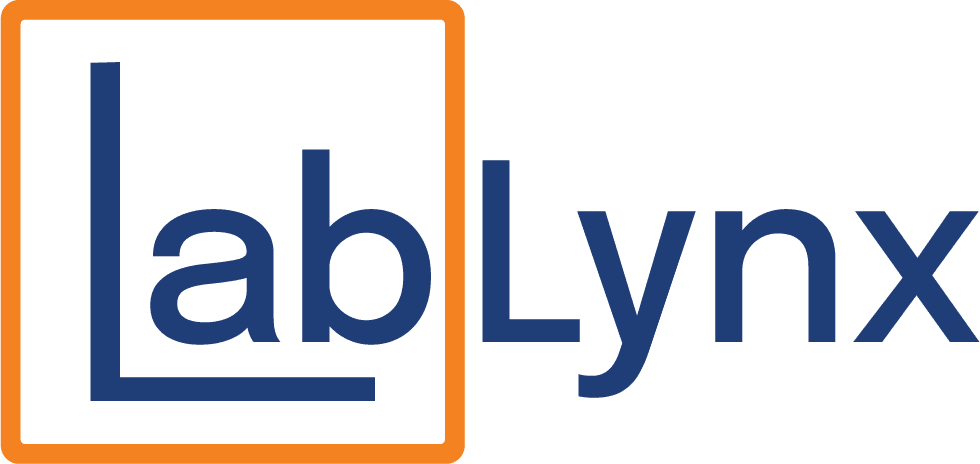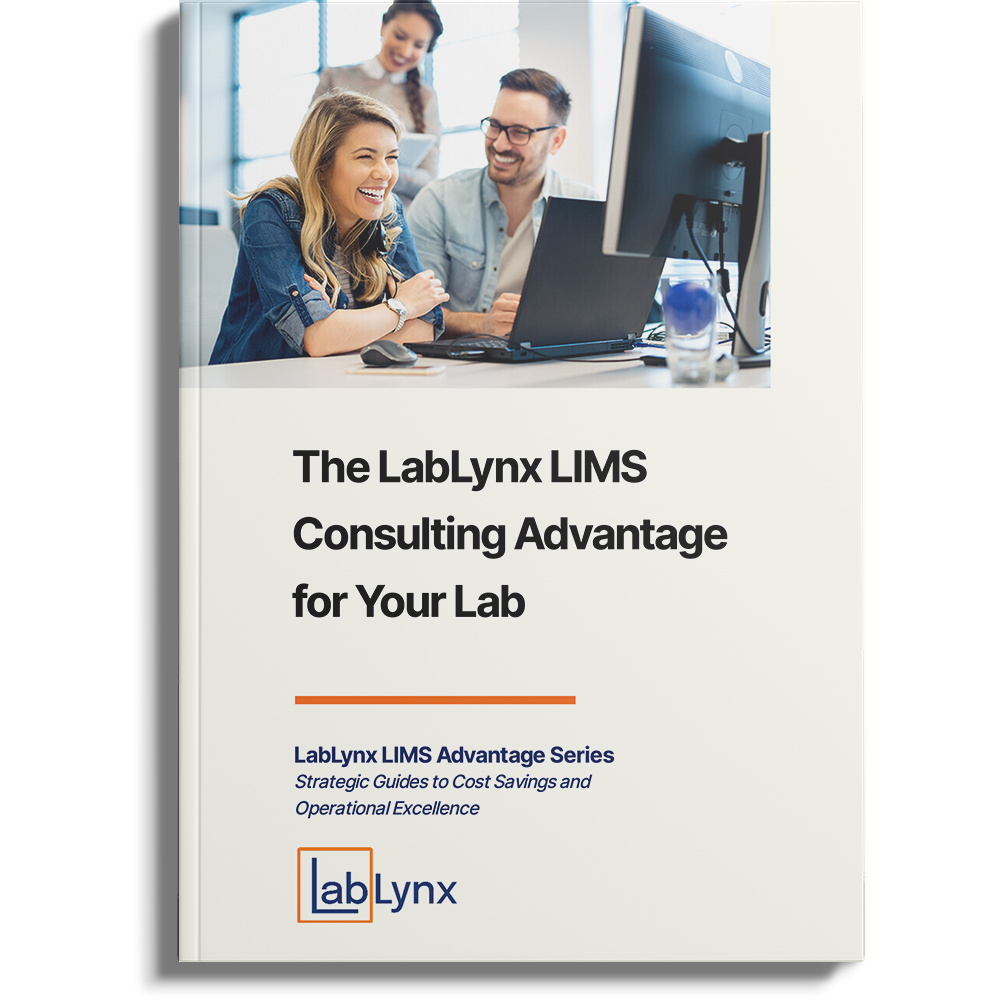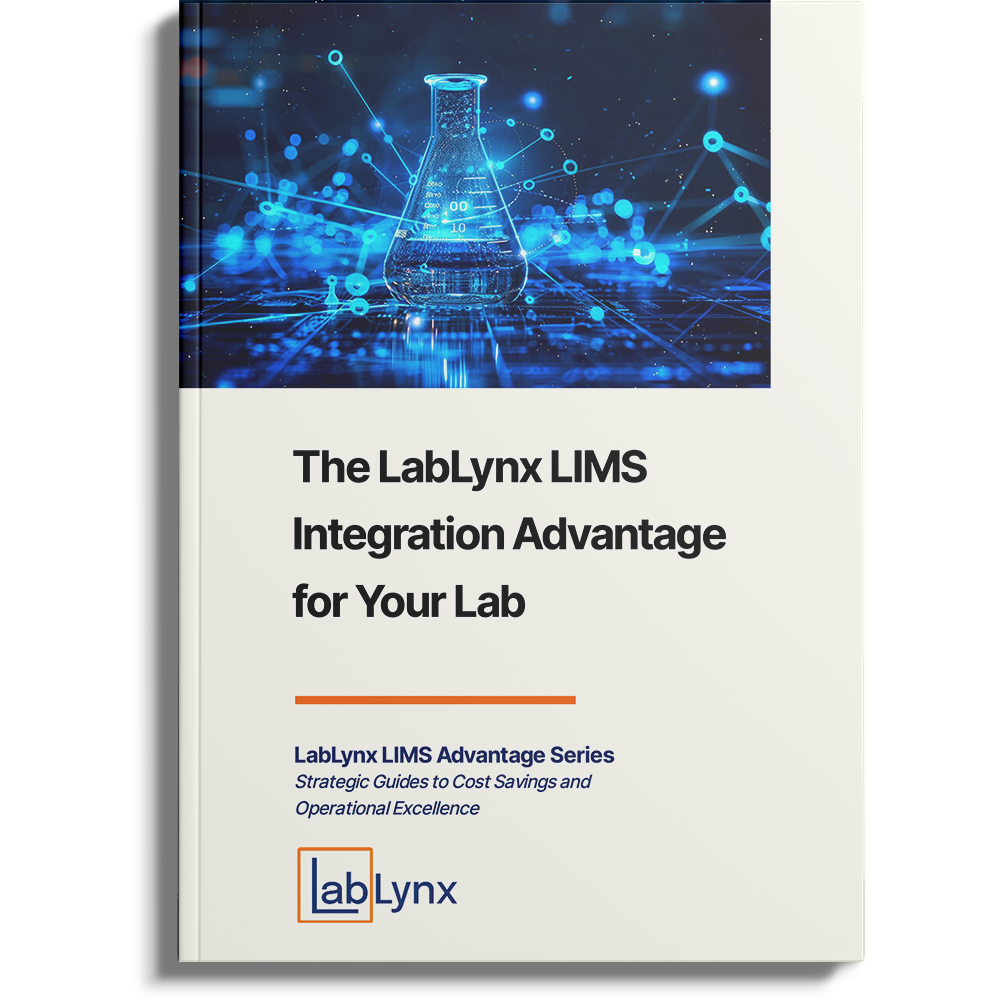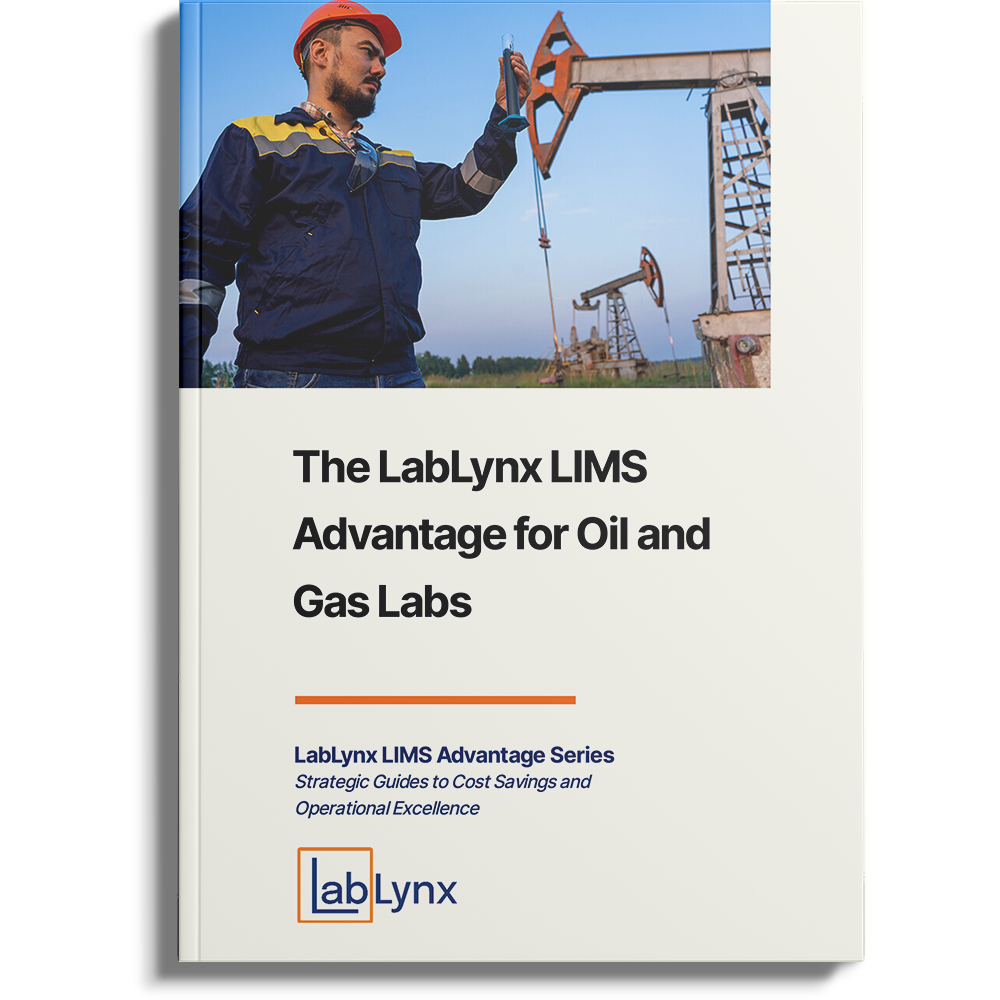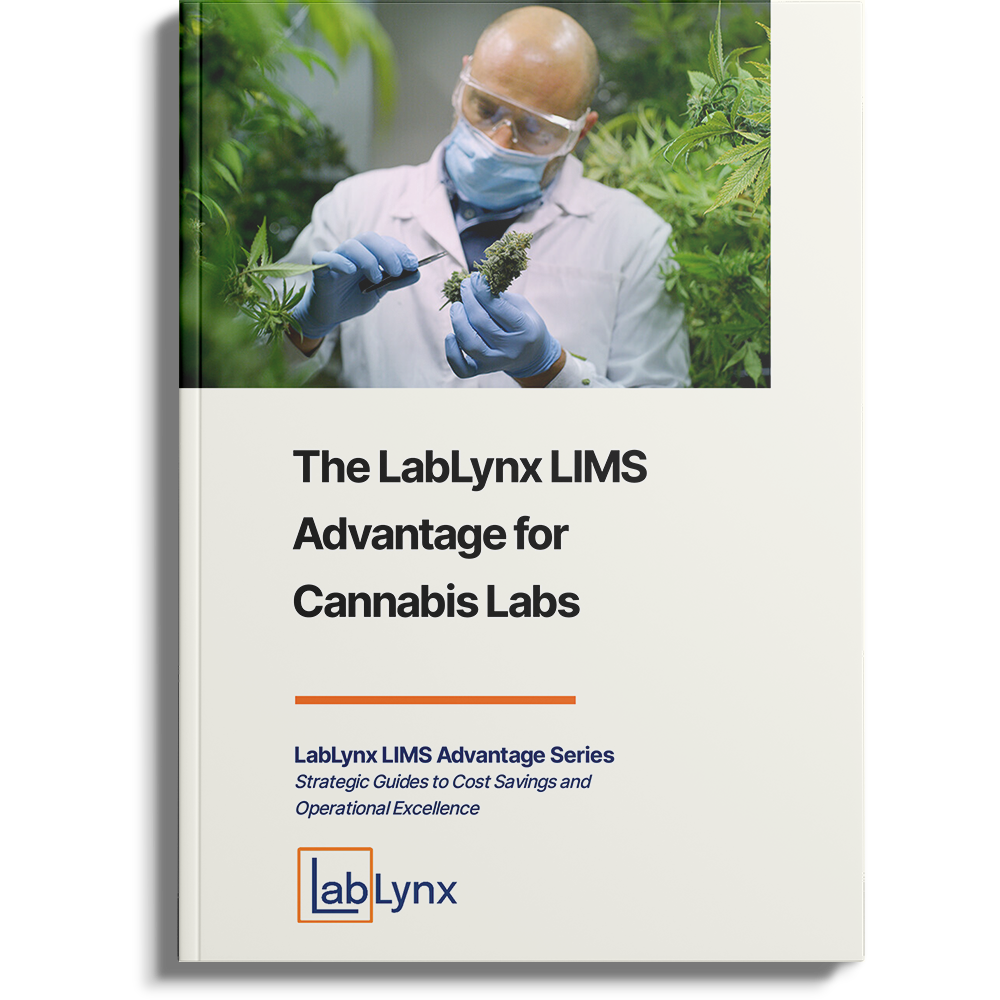
Testing in ISO/IEC 17025 laboratories
The scope section of ISO/IEC 17025 indicates that the standard “is applicable to all organizations performing laboratory activities, regardless of the number of personnel.”[1] Further, in its terms and definitions section, the standard states that a laboratory—for the purposes of the document—is a “body that performs one or more of … testing, calibration, [and] sampling, associated with subsequent testing or calibration.”[1] Of course, when it comes to testing, calibration, and sampling, these types of activities occur in a wide variety of industry contexts, including but not limited to environmental science, forensic science, food and beverage manufacturing, agricultural research, and pharmaceutical manufacturing.
The following subsections—largely as described by Pillai et al.[2]—provide background on the different laboratory operations affected by ISO/IEC 17025 and give examples of ISO/IEC 17025-accredited testing activities, research topics, or calibration targets noted in academic literature.
Analytical and regulatory testing labs
These types of labs conduct analytical tests on a wide variety of substances, materials, and equipment to ensure they are safe, effective, and secure for their application. Often times that testing is being performed due to a regulatory mandate concerning safety and efficacy.[2] Manufacturers of all types of consumables and consumer use products (e.g., pharmaceuticals, foods, and cosmetics) will turn to in-house or third-party analytical and regulatory testing laboratories to perform the recommended or mandated analyses on their products to ensure their quality and safety.[2] Additionally, federal, state, and local governments also have to follow regulations concerning frequent testing of municipal infrastructure, including water, wastewater, and construction activities. Yet another example can be found with the analytical activities of the forensic laboratory, which provides a diverse array of investigative services. Examples of activities conducted by these and similar labs under ISO/IEC 17025 recommendations and protocols include[3]:
- analytical chemistry sampling;
- sampling and high-resolution gamma-ray spectrometry of environmental soil, tap water, and aerosol filters;
- radiological testing of food and drinking water;
- individual and environmental dosimetry testing;
- forensic paternity testing;
- forensic anthropology analyses; and
- forensic toxicology and drug analysis.
A subset of analytical and regulatory testing labs is product development and manufacturing labs. These have a routine focus on pre-market research and development (R&D) and quality control analyses that help bring a product or service to market. Testing is typically conducted early on in a product lifecycle, based upon a set of predetermined limits set by a manufacturer or other criteria that are in turn driven by regulations and/or customer requirements.[2] This sort of testing could occur with sourcing ingredients or components to ensure they are certified to not contain allergens or an acceptable and safe level of contaminants, such as heavy metals. It also occurs during the development phase to ensure that any proposed final recipe or manufacturing specification doesn’t have any unexpected toxicology or errors and has a reasonable chance of going to market.[4][5] Examples of activities conducted by these and similar labs under ISO/IEC 17025 recommendations and protocols include[3]:
- pesticide testing of honey;
- nitrogen, protein, moisture, and ash analysis of foodstuffs;
- toxic and allergenic component/contaminant analysis of consumer cosmetic, personal care, and building products;
- long-range infrared camera development; and
- veterinary low-dose Cannabis sativa extract development.
Basic and applied research labs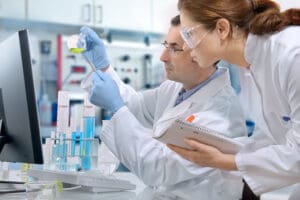
Basic research labs seek to understand and form theories concerning scientific questions, while applied research labs typically follow that basic research, conducting studies to apply that basic research towards solving practical problems. Both “conduct their work to support and inform the understanding of science”, as well as drive regulatory support[2], and these lab can benefit from the recommended approach of ISO/IEC 17025. Basic and applied research labs may appear in academia, in government, or in private industry, studying a wide variety of topics. Research topics in ISO/IEC 17025-certified labs include (but are not limited to)[3]:
- veterinary parasitology;
- environmental chemistry;
- diseases and their pathogenesis;
- pharmaceuticals; and
- contract research projects.
Reference measurement and calibration labs
A reference or calibration laboratory performs reference or calibration measurement procedures, or assigns reference values to test objects, later potentially providing those associated reference values for references or sources of traceability of test results.[6][7][8] While laboratory instruments are a significant focus, laboratory equipment isn’t all that’s getting calibrated. Reference and calibration labs also calibrate important equipment in other fields of expertise. Examples of instruments and equipment getting calibrated to a standard in ISO/IEC 17025 calibration labs include[3]:
- radiation monitoring instruments;
- electronic medical equipment;
- laser and optical communication equipment; and
- high-accuracy Global Navigation Satellite System-based instruments.
A note about clinical laboratories
You may notice that the clinical laboratory doesn’t appear in the above listing. That is because quality management in the clinical lab is best guided by ISO 15189:2022 Medical laboratories — Requirements for quality and competence. (This is not to say that ISO/IEC 17025-compliant environments haven’t conducted clinical analyses, but it’s not the most ideal standard to be compliant with in the clinical environment, and ISO 15189 is increasingly common in hospital and clinical labs.[9]) The standard, which received an update in December 2022, is described by the International Organization of Standardization as being “applicable to medical laboratories in developing their management systems and assessing their competence. It is also applicable for confirming or recognizing the competence of medical laboratories by laboratory users, regulatory authorities, and accreditation bodies.”[10] Development of the standard began in the mid-1990s due to the lack of applicability ISO/IEC 17025 and ISO 9001 had to clinical labs. First published in February 2003, the standard was, however, developed with ISO/IEC 17025 and ISO 9001 in mind, taking the technical requirements of the first and the quality management requirements of the latter, while also adding input on professional requirements from the European Communities Confederation of Clinical Chemistry (EC4).[11]
All said, ISO 15189 is arguably the best quality management standard for clinical laboratories as it takes into consideration the specific requirements of the medical environment and the importance of the medical laboratory to improving patient safety and outcomes.[12]
References
Portions of this article were adapted from the LIMSwiki article by the same name, by the same author, Shawn E. Douglas at https://www.limswiki.org/index.php/LIMS_FAQ:What_types_of_laboratory_testing_are_affected_by_ISO/IEC_17025%3F. Note that the original LIMSwiki article has all the original citations; in order to keep this version manageable, the individual citations have been replaced with a reference to the original LIMSwiki article. Citations for this version are:
- ISO/IEC 17025:2017 General requirements for the competence of testing and calibration laboratories”. International Organization for Standardization. November 2017. Retrieved 09 October 2023. https://www.iso.org/standard/66912.html
- Pillai, Segaran; Calvert, Jennifer; Fox, Elizabeth (3 November 2022). “Practical considerations for laboratories: Implementing a holistic quality management system”. Frontiers in Bioengineering and Biotechnology 10 : 1040103. doi:10.3389/fbioe.2022.1040103. ISSN: 2296-4185. https://www.frontiersin.org/articles/10.3389/fbioe.2022.1040103/full
- Douglas, S.E. (January 2023). ” LIMS FAQ:What types of laboratory testing are affected by ISO/IEC 17025?”. LIMSwiki . Retrieved 09 October 2023. https://www.limswiki.org/index.php/LIMS_FAQ:What_types_of_laboratory_testing_are_affected_by_ISO/IEC_17025%3F
- How Organizations Can Improve Lab Testing Within the R&D Process”. Manufacturing.net. 14 June 2017. Retrieved 09 October 2023. https://www.manufacturing.net/home/article/13165177/how-organizations-can-improve-lab-testing-within-the-rd-process
- “Plastic and Plumbing Testing and R&D Lab Services”. NSF. Retrieved 09 October 2023. https://www.nsf.org/testing/lab-testing/plastic-plumbing-testing-rd-lab
- Czichos, Horst ; Saito, Tetsuya; Smith, Leslie R., ed. (2006). Springer Handbook of Materials Measurement Methods. Springer. p. 83–84. [ISBN: 3540303006. Retrieved 09 October 2023. https://books.google.com/books?id=8lANaR-Pqi4C&pg=PA83
- Siekmann, Lothar (November 2007). “Requirements for Reference (Calibration) Laboratories in Laboratory Medicine” (PDF). The Clinical Biochemist Reviews 28 (4): 149–154. PMC: PMC2282407. Retrieved 09 October 2023. http://www.ifcc.org/media/147899/LS%20Clin%20Biochem%20Rev%202007_28_149-154.pdf
- “ISO 15195:2018 – Laboratory medicine – Requirements for the competence of calibration laboratories using reference measurement procedures”. International Organization for Standardization. December 2018. Retrieved 09 October 2023. https://www.iso.org/standard/69824.html
- Wilson, Ian G.; Smye, Michael; Wallace, Ian J. C. (1 February 2016). “Meta-audit of laboratory ISO accreditation inspections: measuring the old emperor’s clothes”. MicrobiologyOpen 5 (1): 95–105. doi: 10.1002/mbo3.314. ISSN: 2045-8827. https://pubmed.ncbi.nlm.nih.gov/26620076
- ISO 15189:2022 Medical laboratories — Requirements for quality and competence”. International Organization for Standardization. December 2022. Retrieved 09 October 2023. https://www.iso.org/standard/76677.html
- Plebani, Mario; Sciacovelli, Laura (1 September 2017). “ISO 15189 Accreditation: Navigation Between Quality Management and Patient Safety”. Journal of Medical Biochemistry 36 (3): 225–230. doi: 10.1515/jomb-2017-0038. ISSN: 1452-8266. https://scindeks.ceon.rs/article.aspx?artid=1452-82581703225P
- World Health Organization (2011). “Laboratory Quality Management System: Handbook” (PDF). World Health Organization. ISBN: 9789241548274. http://apps.who.int/iris/bitstream/handle/10665/44665/9789241548274_eng.pdf?sequence=1
